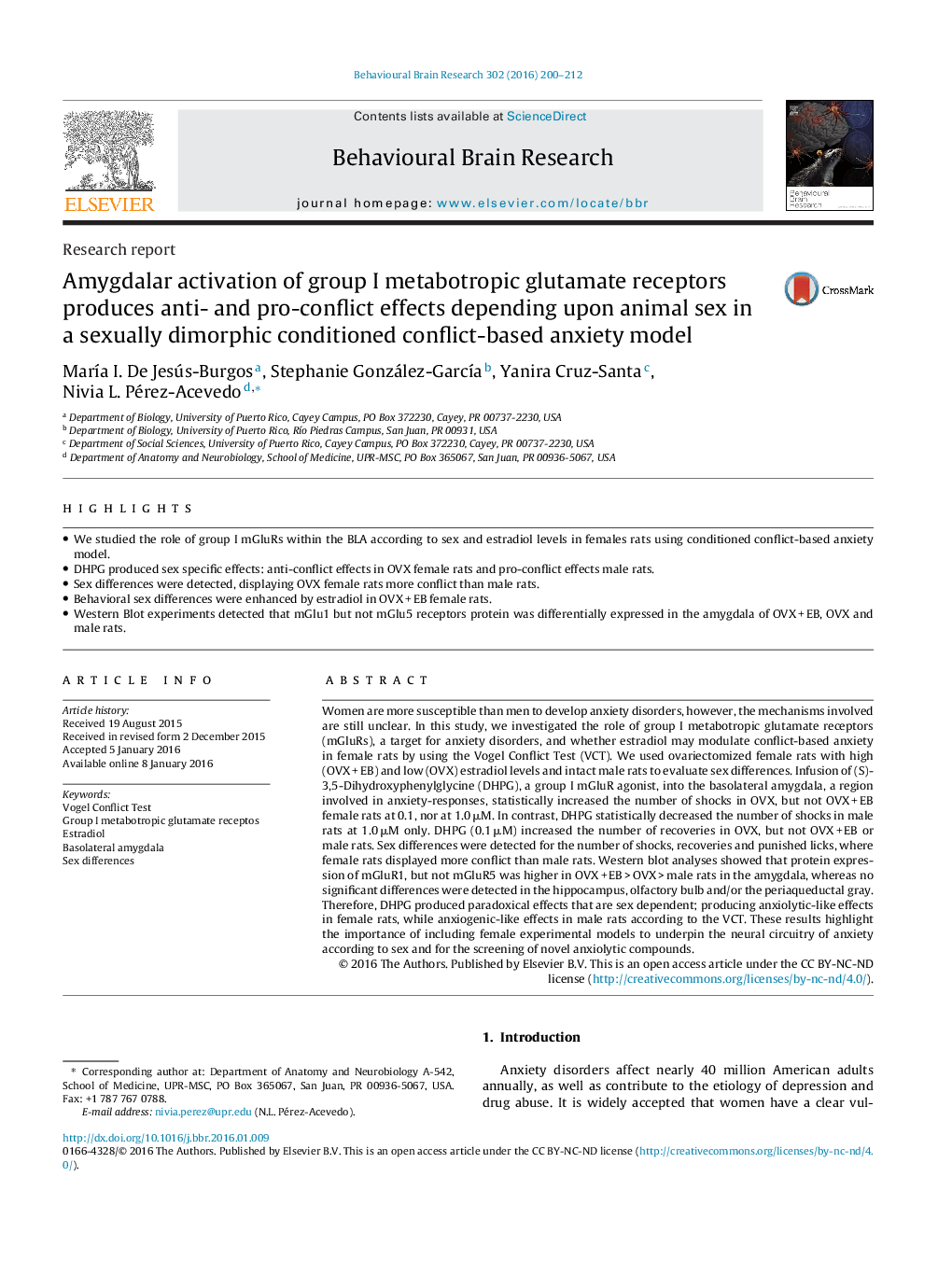| کد مقاله | کد نشریه | سال انتشار | مقاله انگلیسی | نسخه تمام متن |
|---|---|---|---|---|
| 6256183 | 1612931 | 2016 | 13 صفحه PDF | دانلود رایگان |
- We studied the role of group I mGluRs within the BLA according to sex and estradiol levels in females rats using conditioned conflict-based anxiety model.
- DHPG produced sex specific effects: anti-conflict effects in OVX female rats and pro-conflict effects male rats.
- Sex differences were detected, displaying OVX female rats more conflict than male rats.
- Behavioral sex differences were enhanced by estradiol in OVXÂ +Â EB female rats.
- Western Blot experiments detected that mGlu1 but not mGlu5 receptors protein was differentially expressed in the amygdala of OVXÂ +Â EB, OVX and male rats.
Women are more susceptible than men to develop anxiety disorders, however, the mechanisms involved are still unclear. In this study, we investigated the role of group I metabotropic glutamate receptors (mGluRs), a target for anxiety disorders, and whether estradiol may modulate conflict-based anxiety in female rats by using the Vogel Conflict Test (VCT). We used ovariectomized female rats with high (OVX + EB) and low (OVX) estradiol levels and intact male rats to evaluate sex differences. Infusion of (S)-3,5-Dihydroxyphenylglycine (DHPG), a group I mGluR agonist, into the basolateral amygdala, a region involved in anxiety-responses, statistically increased the number of shocks in OVX, but not OVX + EB female rats at 0.1, nor at 1.0 μM. In contrast, DHPG statistically decreased the number of shocks in male rats at 1.0 μM only. DHPG (0.1 μM) increased the number of recoveries in OVX, but not OVX + EB or male rats. Sex differences were detected for the number of shocks, recoveries and punished licks, where female rats displayed more conflict than male rats. Western blot analyses showed that protein expression of mGluR1, but not mGluR5 was higher in OVX + EB > OVX > male rats in the amygdala, whereas no significant differences were detected in the hippocampus, olfactory bulb and/or the periaqueductal gray. Therefore, DHPG produced paradoxical effects that are sex dependent; producing anxiolytic-like effects in female rats, while anxiogenic-like effects in male rats according to the VCT. These results highlight the importance of including female experimental models to underpin the neural circuitry of anxiety according to sex and for the screening of novel anxiolytic compounds.
Journal: Behavioural Brain Research - Volume 302, 1 April 2016, Pages 200-212
